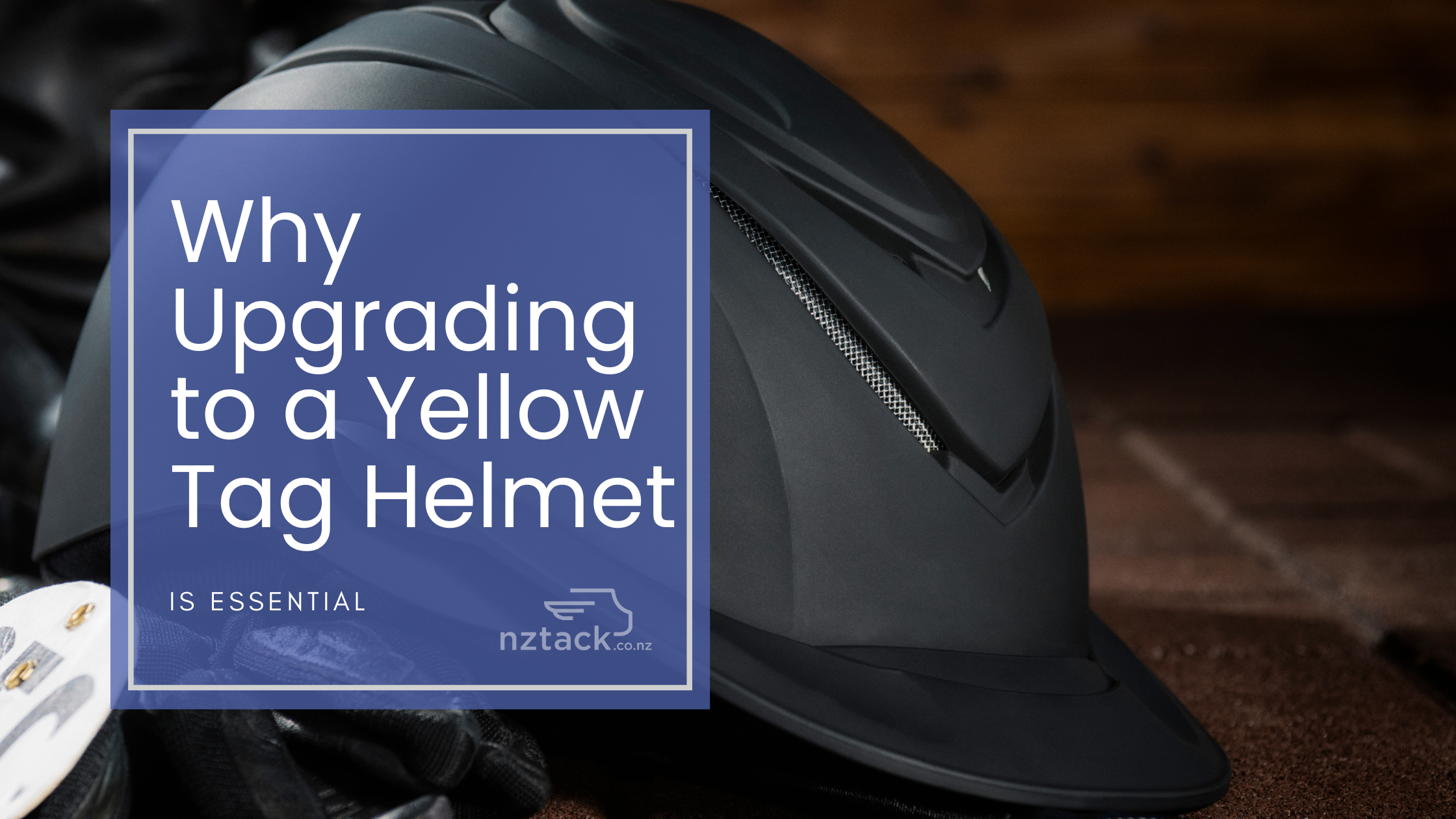Why Yellow-Tagged Helmets Matter for Every Rider
Your brain is irreplaceable—why take risks with anything less than the best protection? Accidents happen in the blink of an eye, and a helmet is your first line of defense. But here’s the reality: not all helmets offer the same level of safety.
As safety standards evolve, so should your helmet. In August 2023, New Zealand introduced yellow safety tags to ensure riders are using helmets that meet the latest, highest safety standards. But what exactly is a yellow-tagged helmet, and why does it matter? Let's take a closer look.
What is Helmet Tagging?
Helmet tagging is a system that verifies whether a riding helmet meets strict safety standards. A helmet with the correct tag has been tested and certified to provide adequate protection in the event of a fall or impact.
Having a helmet tagged isn’t just about following the rules—it’s about making sure your gear is truly up to the job of protecting you.
Why is Helmet Tagging Important?
A helmet tag is a quick, visible way to confirm that a helmet meets safety standards set by Equestrian Sports New Zealand (ESNZ) and other regulatory bodies. Event organisers, coaches, and fellow riders can easily see whether a helmet is compliant and safe to use.
By ensuring riders wear helmets that meet these standards, tagging helps reduce the risk of severe head injuries and ensures equipment is in good condition.
What’s Different About Yellow-Tagged Helmets?
In August 2023, New Zealand moved from red-tagged helmets to yellow-tagged ones, signifying compliance with updated international safety regulations. This means that yellow-tagged helmets offer the best protection available today.
Key Safety Features of a Yellow-Tagged Helmet:
-
Impact Absorption: Advanced foam lining absorbs shock, reducing the force on your skull during a fall.
-
Durable Outer Shell: Made from high-strength materials like polycarbonate or fiberglass to shield against external impact.
-
Ventilation System: Helps regulate temperature and prevents overheating during rides.
-
Secure Fit & Retention System: A well-designed chin strap and adjustable padding ensure the helmet stays in place.
These features work together to maximize safety and comfort—so you can ride with confidence.
When Should You Replace Your Helmet?
A helmet doesn’t last forever. Even if it looks fine, it may no longer provide full protection. Replace your helmet if:
- It’s been in a fall or impact. The structural integrity could be compromised, even if there’s no visible damage.
- It’s past its expiration date. Most helmets have a lifespan of 5 to 7 years, depending on the manufacturer.
- There are visible cracks or dents. Any sign of damage means the helmet may not protect you properly.
- Safety standards have changed. If your helmet no longer meets current regulations, it’s time to upgrade.
What Are the Actual Helmet Requirements?
Previously, helmets with the VG1 standard alone were accepted; however, concerns about the quality and consistency of some VG1-certified helmets led to a revision. Now, in addition to the VG1 standard, helmets must also have a third-party quality assurance mark, such as the BSI Kitemark, to be eligible for yellow tagging.
Helmets must now comply with one of the following international safety standards to qualify for the yellow tag:
-
AS/NZS 3838:2006 (Australia/New Zealand Standard)
This is the primary standard for equestrian helmets in New Zealand and Australia. It tests helmets for impact attenuation, strap strength, and retention, among other factors. Helmets meeting this standard will bear the AS/NZS 3838 mark and are eligible for yellow tagging. -
PAS 015:2011 (UK Standard)
The PAS 015 standard is a highly recognised helmet safety standard in the UK, developed for horse riding, and it ensures that helmets are tested for impact absorption, shell integrity, and harness security. The helmets that meet PAS 015 also need to carry an additional third-party certification, such as the BSI Kitemark, for compliance. -
ASTM F1163-15 (USA Standard)
This standard applies to equestrian helmets in the USA and covers multiple safety criteria, including impact resistance, coverage, chin strap strength, and fit. Helmets conforming to ASTM F1163-15 must also have a SEI (Safety Equipment Institute) certification. -
VG1 01.040 (European Standard)
The VG1 standard was developed by the European Union and is commonly used across Europe for equestrian helmets. It tests helmets for high-energy impacts, the structural integrity of the shell, strap strength, and fit. Helmets passing this standard should also be marked with a BSI Kitemark to ensure third-party verification.
Who Can Yellow-Tag a Helmet?
To have your helmet yellow tagged, you can contact an ESNZ-approved official or attend designated helmet tagging sessions at events. This service is typically provided at no cost to the rider.
Need to find a helmet tagger near you? Check out the ESNZ list of accredited helmet taggers:
https://www.nzequestrian.org.nz/esnz-helmet-taggers/
Ride Safe, Ride Smart
Upgrading to a yellow-tagged helmet is a simple but crucial step in protecting yourself while riding. Whether you’re competing or just enjoying a casual ride, having a properly certified helmet could make all the difference.
Stay safe, check your helmet, and ride with confidence!





